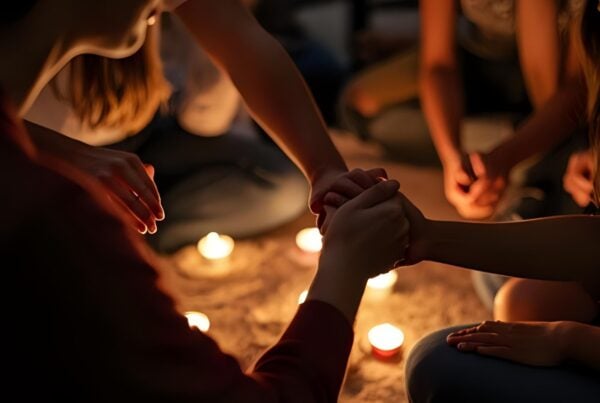Understanding the Functions of Shame, Blame, and Guilt: How They Interact and Impact Trauma Recovery
Shame: A Barrier to Trauma Resolution
Shame often acts as a formidable obstacle in trauma recovery. Unlike guilt, which ties to specific actions or behaviors, shame feels profoundly personal. It’s not about what we’ve done but who we are. Shame is often triggered by criticism, failure, or even success, and it can disrupt our ability to enjoy life, build healthy self-esteem, or assert ourselves.
Interestingly, shame is rooted in survival. Much like “fight, flight, or freeze” responses, it’s a primal emotion signaling perceived interpersonal threats. While this response may have been crucial for survival in the past, it can become maladaptive when it persists, creating a harmful cycle.
The Vicious Cycle of Shame
Shame involves more than thoughts or feelings; it’s a full-body experience often paired with intrusive thoughts that intensify physical and emotional sensations. This interplay creates a vicious cycle: the body’s reaction fuels the mind’s negative narratives, reinforcing the shame response.
Trauma-related schemas—deeply ingrained beliefs about safety, self-worth, and expression—frequently sustain this cycle. Survivors may internalize messages like, “It’s unsafe to succeed” or “I’m unworthy,” perpetuating the emotional pain long after the trauma.
Shame as a Survival “Resource”
In conflict, shame can sometimes serve as a strategy to de-escalate tension, offering a defense against further harm. However, unresolved trauma can cause shame responses to linger. These responses often reside in implicit memories, affecting both the mind and body. Research reveals that traumatic memories are frequently stored in the body as emotional states rather than coherent narratives, making it difficult to recognize their ongoing influence.
Blame and Shame: A Complicated Relationship
Blame and shame frequently intertwine, particularly in trauma. Survivors may blame themselves for the harm they experienced, fostering self-loathing and perpetuating shame. Self-blame often reinforces negative beliefs about identity and worth, trapping individuals in cycles of emotional pain.
Understanding that these emotions once served as survival mechanisms can help break these cycles. While blame and shame may have offered protection in the past, they often hinder healing when they persist unchecked.
Guilt: A Moral Emotion With Purpose
Guilt, often confused with shame, serves a distinct role. It relates to actions rather than identity, arising when we perceive a violation of our moral code. Unlike shame, guilt can be constructive, motivating us to repair relationships and make amends. However, excessive guilt can lead to unproductive self-punishment and feelings of anxiety or depression.
The Role of Guilt in Mental Health
Guilt plays a vital role in fostering personal responsibility and societal cohesion. Yet, when it becomes excessive, it can trap individuals in cycles of over-apologizing or withdrawal. Finding balance is key. By channeling guilt into actionable change while avoiding disproportionate self-blame, individuals can leverage its benefits without being overwhelmed.
Mindfulness and Self-Awareness: Tools for Healing
Mindfulness practices offer powerful tools for navigating shame, blame, and guilt. By observing emotions without judgment, individuals can disrupt cycles of negative self-identity. For instance, noticing the bodily sensations of shame without attaching meaning to them can help separate one’s identity from the emotion.
Reframing shame as a “survival resource” can also be transformative. Recognizing that shame once served a protective role allows individuals to view it with compassion rather than judgment, paving the way for healing.
Differentiating Thoughts, Feelings, and Body Sensations
Shame, guilt, and blame are multifaceted experiences. When someone says, “I feel ashamed,” they may be expressing a belief (“I am defective”), an emotional state (“I feel humiliated”), or a physical sensation (“I feel flushed”). Differentiating these aspects can help untangle the web of emotions, leading to greater clarity and healing.
Moving Beyond the Guilt Trap
While guilt can prompt positive change, it can also trap individuals in cycles of self-blame. This occurs when people overestimate their responsibility or act disproportionately to their perceived wrongdoings. Breaking free from the “guilt trap” requires examining personal standards and ensuring responses to guilt are balanced and fair.
Conclusion: Navigating the Complexities of Shame, Blame, and Guilt
Shame, blame, and guilt are intricate emotions that profoundly impact our psychological and emotional lives. Though they can become barriers to healing, they also offer opportunities for growth when approached with mindfulness and self-awareness. By understanding their functions and interconnections, we can break free from cycles of negative emotions and foster resilience, self-compassion, and emotional well-being. Lets do this together by scheduling your first appointment today!







